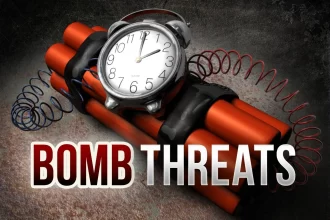LOS ANGELES, — In a relentless battle against one of the most destructive wildfire outbreaks in Los Angeles history, firefighters have begun to make progress. Fierce winds that fueled the flames for days have finally eased, offering a glimmer of hope amid widespread devastation.
Six simultaneous wildfires have scorched Los Angeles County since Tuesday, claiming at least 10 lives and obliterating nearly 10,000 structures. Officials fear the toll will rise as damage assessments continue.
The Palisades Fire on the city’s western edge and the Eaton Fire in the eastern foothills are showing signs of containment after days of unchecked destruction. As of Friday, the Palisades Fire was 8% contained, and the Eaton Fire reached 3%, according to Cal Fire. Combined, these two infernos have consumed over 13,700 hectares—an area more than twice the size of Manhattan.
Efforts Intensify as Winds Subside
Los Angeles Mayor Karen Bass expressed cautious optimism during a press briefing, stating, “We are doing everything possible to bring this crisis under control. With the winds expected to intensify next week, our focus remains on saving lives and preparing the city.”
The National Weather Service (NWS) forecasts a slight reprieve, with winds slowing to 20 mph and gusts ranging from 35 to 50 mph over the weekend, a stark contrast to recent gusts of up to 80 mph. This improvement will enable more effective aerial firefighting efforts.
“It’s not as gusty, which is a welcome relief for firefighters,” said NWS meteorologist Allison Santorelli. However, she warned that dry conditions and low humidity keep the region at high risk.
Communities in Ruin
In Pacific Palisades, residents returning to their neighborhoods faced apocalyptic scenes of charred debris, scorched vehicles, and brick chimneys standing as eerie remnants of once-thriving homes.
“I have no words,” said Kelly Foster, a psychiatrist, as she sifted through the ashes of her former home.
Authorities have imposed curfews in mandatory evacuation zones to deter looting, and California National Guard troops are stepping in to support overwhelmed emergency responders.
Aiding the Displaced
In Pasadena, hundreds gathered in a parking lot near the Rose Bowl stadium for essential supplies such as clothing, diapers, and water. The makeshift aid center, however, was relocated to accommodate a growing staging area for emergency crews.
Denise Doss, 63, described her anguish after being barred from checking on her Altadena home, citing the risk of smoldering embers and ruptured gas lines. “The uncertainty is unbearable,” she said.
Economic and Environmental Fallout
The economic toll of these wildfires is staggering, with private forecaster AccuWeather estimating losses between $135 billion and $150 billion. Insurers face mounting claims, and residents fear unequal recovery efforts favoring wealthier neighborhoods.
California Insurance Commissioner Ricardo Lara urged insurers to suspend policy cancellations and extend payment grace periods for affected homeowners.
Meanwhile, President Joe Biden declared the fires a major disaster, pledging full federal support for recovery efforts over the next six months. In a call with Governor Gavin Newsom and Mayor Bass, Biden reiterated the federal government’s commitment to assist California during this unprecedented crisis.
Climate and Infrastructure Challenges
The fires erupted following months of drought and the arrival of powerful Santa Ana winds, underscoring the growing frequency of extreme weather events linked to climate change. Officials noted that the region’s water infrastructure was ill-equipped to combat such large-scale wildfires.
Investigations into the fires’ origins are ongoing. While a suspect was questioned in connection with the Kenneth Fire near Calabasas, no arrests have been made. Southern California Edison is also under scrutiny as insurers seek evidence preservation related to the Eaton Fire.
As Los Angeles grapples with the aftermath of this catastrophe, the road to recovery will be long and arduous, testing the resilience of its communities and the resources of local and federal agencies.








